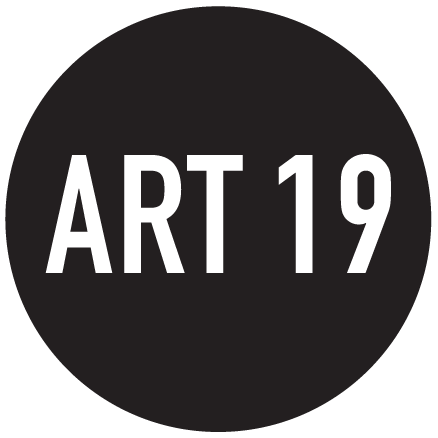Clash : Yoko Ono: Music Of The Mind
"Delve into the powerful, participatory work of the artist and activist."
Yoko Ono has lived a life without boundaries. A Japanese woman who made her voice heard around the globe, she refused to let the barriers of race, class, or gender impede her message. A true cross-disciplinary artist, she has transformed her life into a near century-long creative practise. A ground-breaking visual artist. A profoundly influential musician. A peace activist across multiple decades. Yoko Ono is a by-word in freedom.
Walking around London’s incredible new career-spanning exhibition Yoko Ono: Music Of The Mind at the Tate Modern, you’re struck by the sheer wonder, and the undaunted veracity by which she approaches art. A stunning display of virtuoso innovation, the awesome range of her creative force is enhanced by her unique ability never to repeat herself. In all, more than 200 works are included, from instruction pieces and scores, through to installations, films, music, and photography. This is the bedrock of modern conceptual art.
Yoko Ono, 'Fly’ (1971). Courtesy the artist.
At times, it can be moving, almost wistful. At others, it’s grippingly intense; on occasion, it’s laugh out loud funny. There are those early, now-familiar instruction pieces – ‘Listen to a heartbeat’ or ‘Step in all the puddles of the city’ – with their strange, zen-like grasp of the surreal. And you can also find evidence of some of her most iconic works: Apple from 1966, for example, or the vivid poignancy of Half-A-Room and its evocation of loss amid a splintering relationship.
For an artist often viewed as austere, Yoko Ono: Music Of The Mind is fuelled by a river of emotion. Even the smallest details touch upon the intricacies of her life, a singular existence that sadly includes more than her fair share of pain. Born in 1933, she saw first-hand the devastations of the Second World War, witnessing the firebombing of Tokyo in March 1945. The search for peace is a perennial theme in her work, from those early Fluxus linked poetics to 2016’s haunting and prescient Add Colour (Refugee Boat). It’s impossible to ignore: at one point, you sit down at her famed White Chess set, in which all the pieces are one colour. Humanity’s oldest metaphor for war, her twist on the militarised game carries an observation of futility: “Play as long as you can remember where all the pieces are”.
At one point during the exhibition you turn a corner and peer through the windows of the Tate Modern, to see the words PEACE is POWER soaring down on the Thames. It’s a message of almost unbearable poignancy.
Yoko Ono, Film No. 4 (Bottoms) 1966. Courtesy the artist.
Much of the exhibition itself hinges on a brilliant five-year period of creativity in London, opening in 1966. The city itself was in flux; the white heat of Harold Wilson’s tech revolution meeting the explosive growth of pop culture. Her much-mythologised first meet with John Lennon at the Indica gallery may be the stuff of legend, but confronting the cavalcade of work they constructed together you’re struck by its tenderness, the acceptance of chance and the sense of purpose.
Looking at photographs of the two entwined, there’s a feeling of fate. The sweet innocence of the Vietnam-inspired Acorns for Piece in 1969 finds the two growing together, but the seed itself can perhaps be found in Yoko’s ground-breaking self- published anthology Grapefruit – whose words would later inspire John Lennon’s ‘Imagine’.
The two shared an attraction, a passion for humour at its most surreal, a total rejection of the rules around them, and a thirst for new experiences; it established a kind of code, both for art and life, that vibrates around the exhibition. Yoko’s music, too, should be admired. From pivotal Apple recordings with free jazz luminary Ornette Coleman to her 21st century work with son, Sean Ono Lennon, she’s built a staggering 50-year catalogue whose riches are only just being realised by a stubborn mainstream. But then, as Yoko noted to CLASH in 2013: “I wasn’t creating things for the industry; I was creating for the people and myself. I think that I have, like most artists do probably, a certain pride for being able to push the boundaries.”
Yoko Ono, 'Fly' album cover 1971. Apple Records. Yoko Ono, 'Approximately Infinite Universe' album cover, 1973, Apple Records. album cover, 1973, Apple Records.
There’s a quote utilised for the exhibition’s title, in which Yoko Ono seems to touch on the cross-discipline nature of her work. “The only sound that exists to me is the sound of the mind. My works are only to induce music of the mind in people…” It’s a powerful phrase. In removing the fourth wall Yoko Ono seems to invite our contributions, transforming art from something we experience into something we live.
There’s another quote that comes to mind, from a CLASH interview we conducted with Yoko Ono more than a decade ago. “Pushing boundaries is important in all my creative works. I think that is what artists do. What else can they do, repeat themselves?”
It’s a powerful phrase. In removing the fourth wall Yoko Ono seems to invite our contributions, transforming art from something we experience into something we live. There’s another quote that comes to mind, from a CLASH interview we conducted with Yoko Ono more than a decade ago. “Pushing boundaries is important in all my creative works. I think that is what artists do. What else can they do, repeat themselves?”
Yoko Ono, Freedom 1970. Courtesy the artist.
Article published on https://www.clashmusic.com




